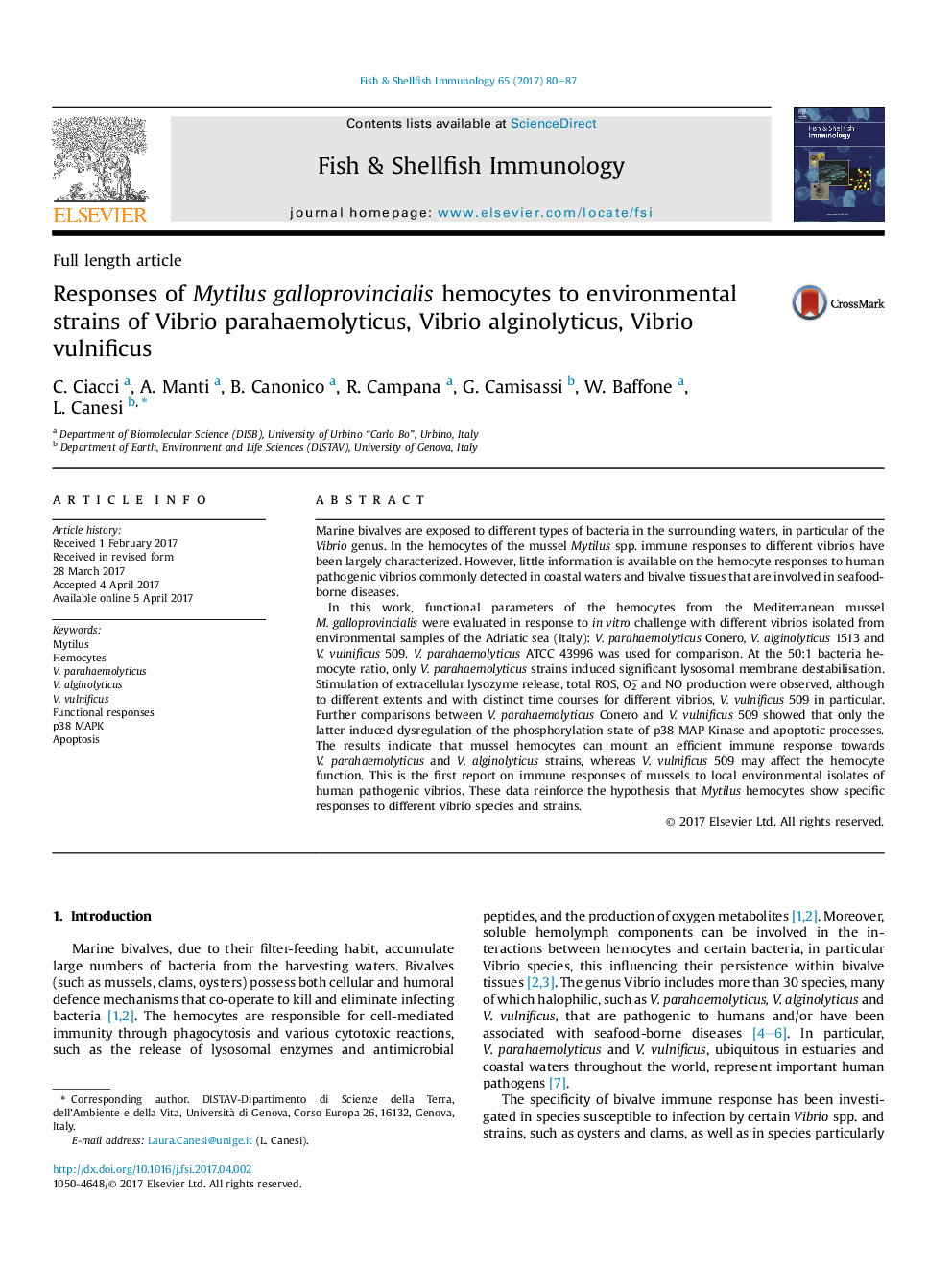| Article ID | Journal | Published Year | Pages | File Type |
|---|---|---|---|---|
| 5540468 | Fish & Shellfish Immunology | 2017 | 8 Pages |
Abstract
In this work, functional parameters of the hemocytes from the Mediterranean mussel M. galloprovincialis were evaluated in response to in vitro challenge with different vibrios isolated from environmental samples of the Adriatic sea (Italy): V. parahaemolyticus Conero, V. alginolyticus 1513 and V. vulnificus 509. V. parahaemolyticus ATCC 43996 was used for comparison. At the 50:1 bacteria hemocyte ratio, only V. parahaemolyticus strains induced significant lysosomal membrane destabilisation. Stimulation of extracellular lysozyme release, total ROS, O2â and NO production were observed, although to different extents and with distinct time courses for different vibrios, V. vulnificus 509 in particular. Further comparisons between V. parahaemolyticus Conero and V. vulnificus 509 showed that only the latter induced dysregulation of the phosphorylation state of p38 MAP Kinase and apoptotic processes. The results indicate that mussel hemocytes can mount an efficient immune response towards V. parahaemolyticus and V. alginolyticus strains, whereas V. vulnificus 509 may affect the hemocyte function. This is the first report on immune responses of mussels to local environmental isolates of human pathogenic vibrios. These data reinforce the hypothesis that Mytilus hemocytes show specific responses to different vibrio species and strains.
Related Topics
Life Sciences
Agricultural and Biological Sciences
Aquatic Science
Authors
C. Ciacci, A. Manti, B. Canonico, R. Campana, G. Camisassi, W. Baffone, L. Canesi,
